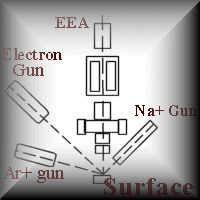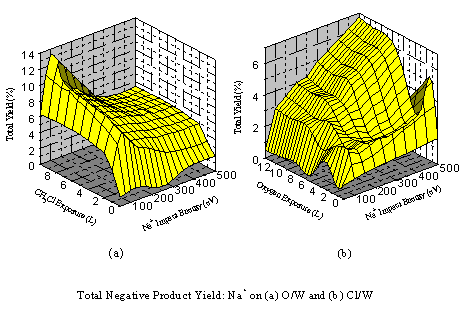
Recently, we have investigated low-energy bombardment of adsorbate-covered tungsten (W) [5] and silicon (Si(100)) [6] surfaces with positive sodium ions, measuring yields, kinetic energies, and masses of secondary negative ions and electrons. These measurements depend, in various degrees, on the incident ion energies and the adsorbate coverage (oxygen and/or chlorine) of the surface. A model used for previous substrates [3] was modified to describe emission from the O/W and Cl/W surfaces; a similar treatment of O/Si(100) surface is under development.

To learn about graduate research opportunities at AMO physics labs, please contact Dr. Champion or visit our laboratories in rooms 321 and 313 of Small Hall (Physics Department).